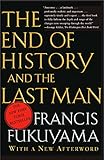“Novalis” was the nom de plume of the polymath Georg Philipp Friedrich Freiherr von Hardenberg, an 18th-century German Romantic poet, novelist, and philosopher. Novalis is also the name of the Substack under which Matthew Gasda publishes daily entries in his “Writer’s Diary,” including philosophical ponderings, social observations, and short fiction. Gasda, like von Hardenberg, is a polymath: a diarist, poet, novelist, and playwright who has written some 17 plays and recently founded the Brooklyn Center for Theatre Research.
Gasda’s 2022 play Dimes Square, about a group of artists and media types set in a Chinatown loft, put him on the map, both literally and figuratively. Dimes Square, caught the attention of theater critics like Helen Shaw, who subsequently appointed Gasda (or, rather, claimed that he “appointed himself”) “the dramatist of the Dimes Square scene.” Geographically, Dimes Square is located on the eastern edge of Chinatown, the neighborhood at the juncture of Ludlow and Canal Street. It even has its own Wikipedia page, where it is noted as “a symbol for a handful of associated countercultural and aesthetic movements centered in New York.” And indeed, in 2021, for those who circulated through its environs and breathed the air, or read about it in social media and came down to see what it was all about, it became a symbol for the wide-ranging intellectual and creative environment that emerged in downtown New York City during the pandemic.
The much ballyhooed Dimes Square “scene” is made up of ambitious downtownistas: writers, artists, actors, “scenesters,” anyone, really, who wants to be somewhere where something is happening, something creative and exciting. There is an energy generated by physical places like Dimes Square where people gather to make art, exchange ideas, and gossip, much in the same way that the firing of neurons in your brain give rise to your mind (if you believe in such a thing). At a time of interrupted socialization and isolation due to Covid, there was an abundance of creative activity fomenting downtown, including the founding of a local paper, The Drunken Canal (now defunct) and several literary magazines: Forever, The Drift, Heavy Traffic, Mars Review of Books, and Tense, the latter of which was founded by the writer and impresario Beckett Rosset, whose West Village loft housed many of Gasda’s theater productions. Indeed Rosset’s 432 Hudson Street locale became as popular an underground gathering place to watch performances and listen to readings—to see and be seen—as the restaurants and bars Clandestino, Dimes, KGB, or the down-and-dirty watering holes, Tile and Scratcher.
Earlier this year, a collection of four of Gasda’s plays—Dimes Square as well as three more intimate dramas: Quartet, Minotaur, and Berlin Story—was published by Applause Books. Over the course of the last three years, I’ve been in attendance at all the plays collected in Dime Square and Other Plays, in all their many different performance spaces. Prior to the founding of the Brooklyn Center for Theatre Research, the plays were all intimately staged in homes (apartments or loft spaces), with minimal design, by a mixture of professional and non-trained actors, wearing pretty much their street clothes.
The earliest of the plays to premier, Quartet (June 2021), centers on two couples—four uninteresting, shallow people—who get together to swap partners. While the women appear to value things other than money and sex, the men are mentally stunted and juvenile and cherish only their boners, porn, beer, sports, and video games. All four of them want to feel special, but they’re not special, and they seem unable to reconcile this. “You’re not interested in anything that doesn’t confirm what you already believe or stray too far from the topic of ‘you,’” one of the women tells her partner. Each depthless character is locked into their ego. Can they break out of their narcissistic posturing and become “interesting”? Hard to say. Their sexual escapades and the coke and alcohol they consume are no longer markers of debauchery and don’t make their indulgence in them interesting. Behavior of this type has been normalized because today so many people engage in it. They are the bourgeoisie. Their performative transgression of so-called norms cannot be a substitute for their lack of any kind of spiritual or existential understanding of themselves. They are like adolescents, as Jay notes, and they seemed doomed to stay that way.
Minotaur (June 2022) is a family drama set amid a Christmas Eve gathering. The family members are at each other from the first act to the closing act. Doug, the husband of Edith and father to two daughters, Clara and Maud, hasn’t gotten over the death of his first wife. Edith, his current, long-suffering spouse, is, according to Doug, burdened with “mastectomy scars, pregnancy scares, stretch marks and cellulite.” Clara, a self-involved writer, lives on her phone and acknowledges she may be at bottom no more than a “third-rate hack.” Maud is engaged to Marco, who may be gay, and is secretly having an incestuous affair with her half-brother, Theo, a filmmaker/bartender who made one film and is out of ideas.
The climax of the play occurs—and at this juncture we realize that we are, as Maude says, in “crazy town”—when Clara admits to Maude that she too has slept with Theo. This bombshell reveals that the “warmed-over family saga,” in Clara’s words, that we thought we were watching is in fact something else; we see only a sad family acting out its neuroses with no catharsis in sight. At one point, Maud says to Theo: “I wish we could just talk for once.” His response: “No you don’t.” Gasda has claimed to have “a good brain for psychology and the things that drive people to block and hurt others.” Minotaur is fine evidence of that skill.
Berlin Story (July, 2022) presents a melancholy portrayal of two older men, Frank and Adam, who can only be described as existentially exhausted. Frank and Adam shamble in and out of the five acts, during which time their younger would-be girlfriends try to penetrate their world-weary, seen-it-all personalities. Which is all but impossible. As Frank notes, “I don’t talk about feelings; you just have to assume they’re there.” Frank, an “old geezer” is on a downward trajectory from war photographer to porn producer, who hopes to save himself by becoming an “erotic” photographer. Adam, his roommate, is a journalist, jaded and indifferent, even to his married girlfriend Monika’s lascivious overtures. (“Do you think I have a nice ass?” she asks him. “Do you think I have a nice pussy? A nice, tight, wet pussy?” “It’s not bad,” he replies.) At the center of this melancholy play is the existential life problem with which both men struggle, and that Frank explains to his visiting girlfriend Clem: “The reality is self-preservation against deterioration and bourgeois assimilation.”
“These are not plays that offer answers, takes, or mere supplements to the churning river of thoughtlings, idealets, and other mental debris that trickle minute by minute across our screens,” writes Christian Lorentzen—who made his acting debut in Dimes Square and also appeared in Berlin Story—in the forward to Dimes Square and Other Plays. Indeed the characters in these plays resist personal breakthroughs. There is no forward march to epiphany, no transcendence. No happy endings.
Dimes Square is by far the strongest piece in this collection, and may be Gasda’s most important play to date. Its themes go far beyond pernicious interfamilial manipulations or the melancholy musings of etiolated men and long-suffering women. One of the most interesting parts of Dimes Square is how Gasda depicts the lives of people who are incessantly online. (Halfway into the play, Klay, a journalist announces to the group, “Fuck, I’m way too online, aren’t I?” To which Iris, the poet, responds: “You’re like, Tweeting as we speak, so.”)
The short exchanges in Dimes Square sound more like texts and DMs than dramatic dialogue. There are plenty of non-sequiturs. There are no extended soliloquies, no boring monologues, no in-depth psychoanalytic probing—no one asks why’d you say that, or what do you mean. The repartee is short, quick, pointed, often sarcastic, peppered with aperçus: (“Great literature deforms conventional language, forces a mutation; that’s just how it works”); psychological insight (“You surround yourself with people you secretly hold in contempt”); and wince-inducing humor (Stefan: “What’s up Terry?” Terry: “The opposite of down.”). Gasda has an ear for repartee as sharp as Henri Cartier-Bresson’s eye for immortalizing the “decisive moment” in a photograph.
Much has already been written about Dimes Square. It’s been hailed by Alex Vadukul in The New York Times as “an underground hit that consistently sells out performances.” Writing in Spike, Geoffrey Mak noted, “As a comedy of manners, the play is as good as it gets.” But there are dissenters. In Vulture, Helen Shaw observed, “Gasda has a deft, humorous touch and a rare talent for steering large numbers of characters through a non-plot, but for a play about the value of thought and seriousness, there’s a strange absence at its center.” She singles out perhaps the key line in the play: “We are living through the dumbest time in American history [sic],” and she asks the right question: “What is that time?”
“We’re living through the dumbest time in human history” is the second line of Dimes Square. It comes out of nowhere, unprovoked, bombastic, a categorical observation delivered by Nate, a canceled indie musician. Echoing, perhaps, the title and ideological stance of Francis Fukuyama’s controversial book The End of History and the Last Man–in which liberal democracy and late capitalism triumph over communism–it has become the most frequently quoted line in the commentary attached to Dimes Square. But Shaw is right: Its import is insufficiently investigated in the play or, for that matter, in the penumbra of exegesis surrounding the play, including her own. The line goes unchallenged by Iris, the poet to whom it is addressed. She ignores it completely, replying, “How many times do I have to share my drugs with you before you recognize me as human?” A non sequitur responding to a non sequitur.
Detractors, some of whom have called Dimes Square “incestuous, self-referential” and insular, seem to miss the point of the play, which is to portray what it’s like for creatives—wherever they are—to survive in the competitive art ecosystem of today. Beneath their petty squabbling and jealousies and sexual competition, the characters in Dimes understand that they are both captives and collaborators in the hegemonic attention economy. It should be no surprise that careerism, as Lorentzen has proposed elsewhere, has become the dominant style in all the arts, not just in New York City, but across America and elsewhere to varying degrees. For perhaps obvious reasons (increasing economic precarity, increased student debt—often for MFA programs—and the mechanics of late capitalism, generally) it is harder than ever to be an artist. Careerism’s ascendance as a “style” has resulted in the creation of a liminal space between true artistic production and blatant commercialization. The lines that demarcate this zone are fluid, and because everyone wants to make it, no one minds much if an artist trespasses and enters the space between authentic art and sell out. Editor and critic Dean Kissick has noted that these days: “Artists don’t talk about their practices, they talk about their careers, which makes for an environment that fosters intense jealousy and stress and alienation and anxiety.” This is the world of Dimes Square.
 What Guy Debord identified in his 1967 book The Society of the Spectacle has settled upon the culture like a miasma: “the ruling order’s nonstop discourse about itself, its never-ending monologue of self-praise, its self-portrait at the stage of totalitarian domination of all aspects of life.” It is late capitalism’s “domination of all aspects of life” that is responsible for the commodification of art and the transformation of artists into careerists. When art is absorbed into the system of commodities and judged not on its artistic merit or aesthetic qualities but on its commercial viability, we all become poorer.
What Guy Debord identified in his 1967 book The Society of the Spectacle has settled upon the culture like a miasma: “the ruling order’s nonstop discourse about itself, its never-ending monologue of self-praise, its self-portrait at the stage of totalitarian domination of all aspects of life.” It is late capitalism’s “domination of all aspects of life” that is responsible for the commodification of art and the transformation of artists into careerists. When art is absorbed into the system of commodities and judged not on its artistic merit or aesthetic qualities but on its commercial viability, we all become poorer.
The downward spiral toward total commodification of all artistic production is what the 20-something visual artist Rosie, in Dimes Square, alludes to when she says that “the overall sense of cultural decline is deeply depressing.” This same sentiment is voiced by Terry, a successful screenwriter who laments the “total foreclosure of moral possibility and imagination in our culture.” As they enter and exit throughout the play’s six acts, the characters of Dimes Square try to get their lives in order, seek meaning and love, even if they’re fleeting. They struggle to balance their day jobs and their hope for success, but remain, like T. S. Eliot’s “The Hollow Men”: suspended between “between the motion and the act,” “the idea and the reality,” “the desire and the spasm.”
The plays in this collection are, as Gasda has noted, “a collision between my own intentions and the polyvalent intentions of the world around me; they are the collision.” The plays capture the ethos of the scenesters of Dimes Square and the fractured dynamic of the family in Minotaur, the forlorn regret of the characters in Berlin Story, as well as the dissipated striving of the bourgeoisie in Quartet. At the conclusion of Dimes Square, Nate repeats his opening line in the play: “We’re living through the dumbest time in human history.” But, one wonders, if history itself is at an end, can we, for example, realistically expect to see an end to careerism as it is portrayed in the play? Will there come a time when aesthetic values triumph over commercial considerations in artistic production? Terry’s response to Nate may be the best answer for now: “Let’s try not to think about it.”


























































